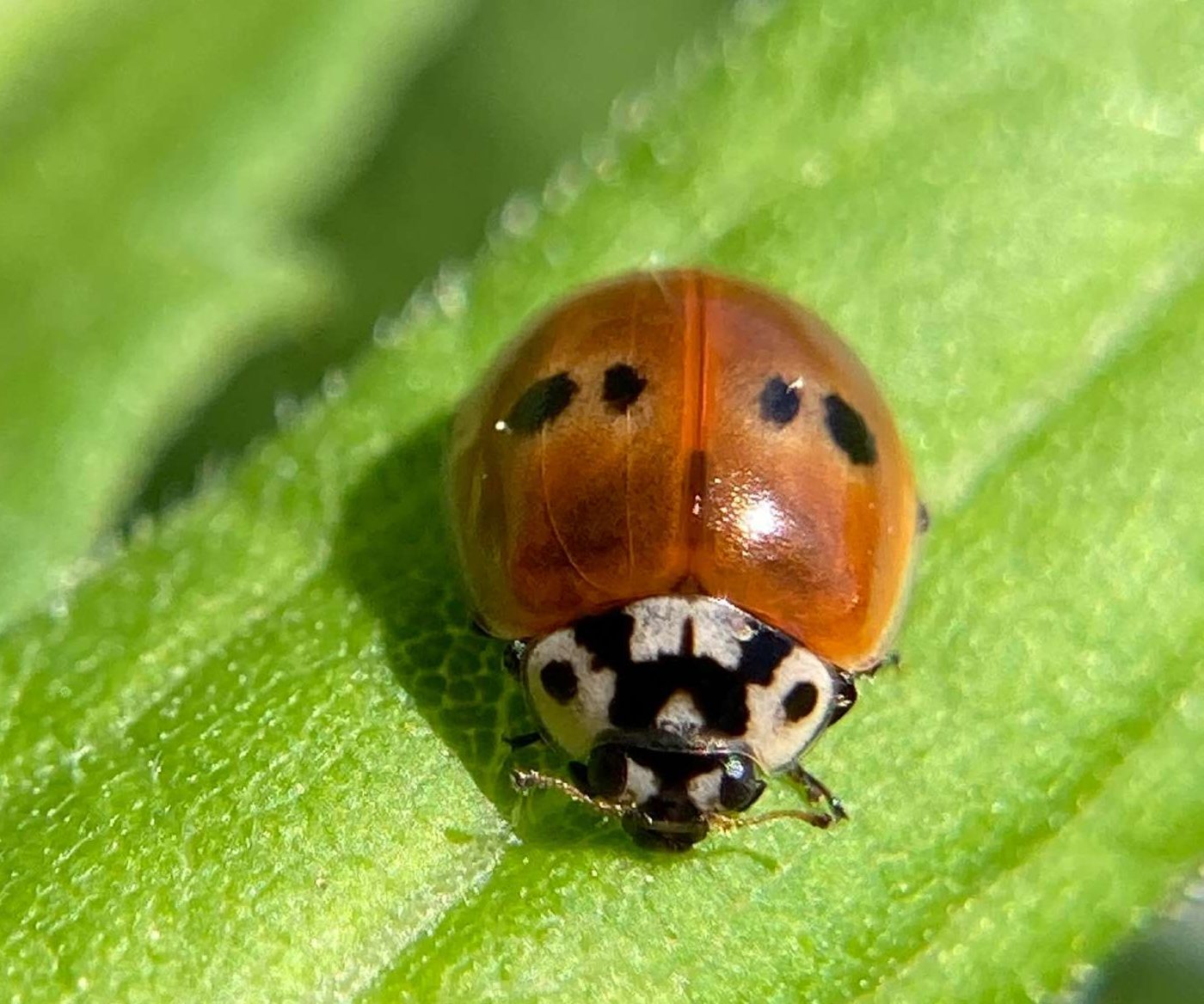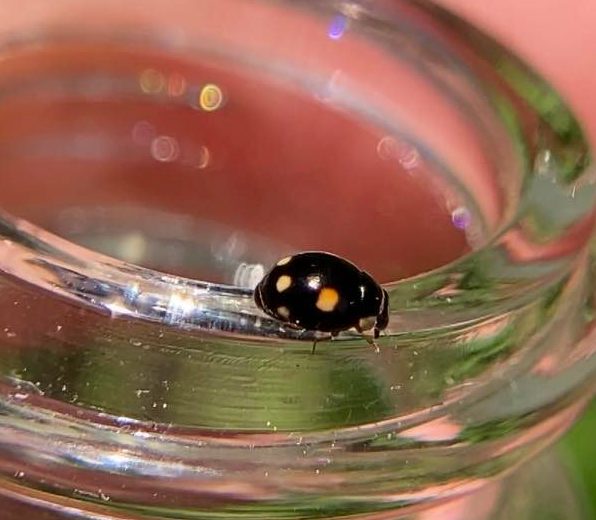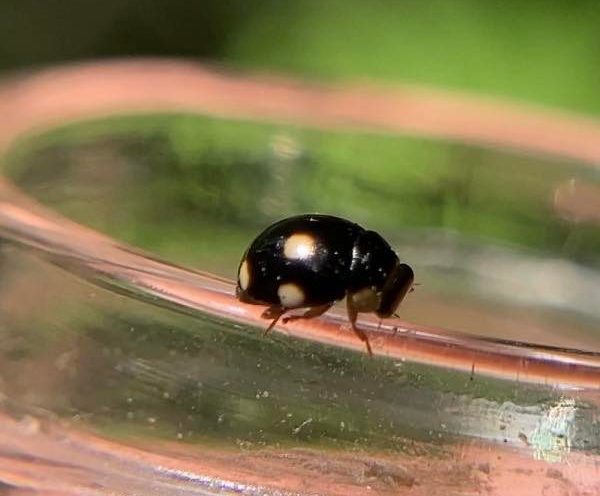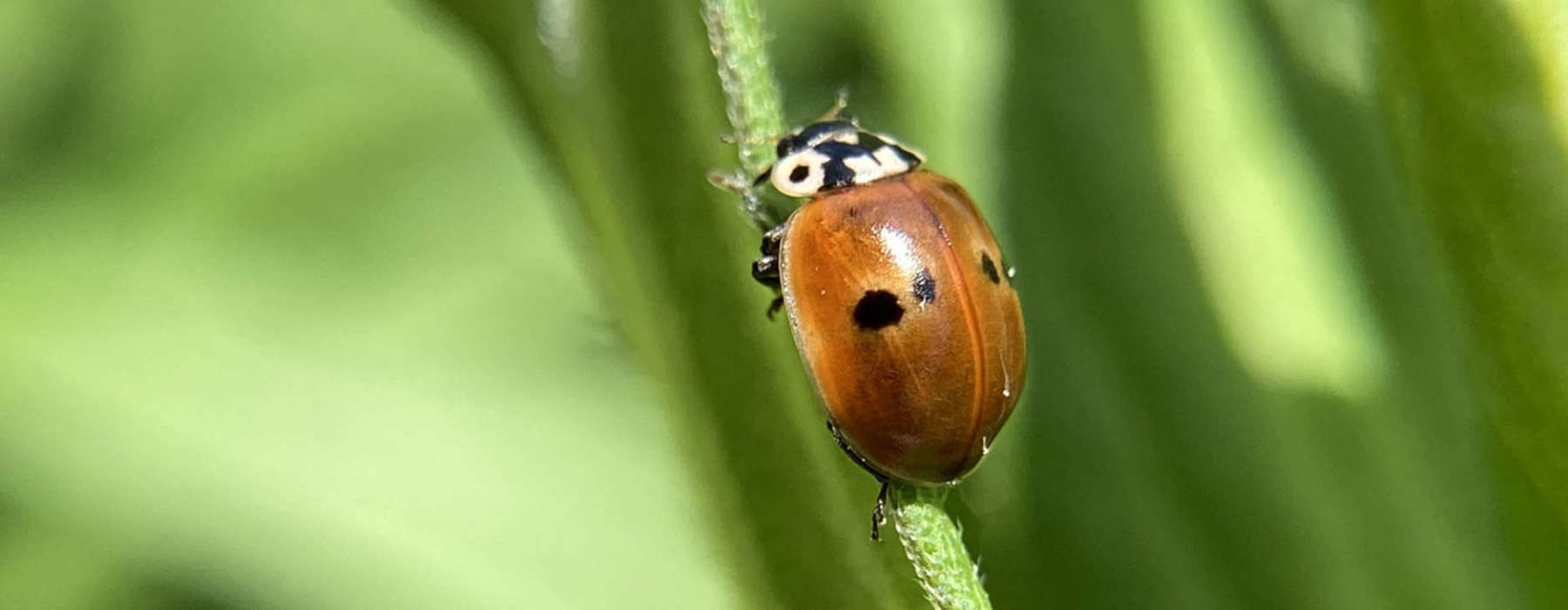The Two-spotted lady Beetle was feared to be extinct in Vermont, until the Vermont Atlas of Life rallied biologists and community scientists to help find them. Against all odds, several Two-spotted Lady Beetles were found and photographed after a 25 year hiatus.
Upon first glance, the small orange dot in the sweep net seemed unremarkable. But Julia Pupko, Eco-Americorps member and Vermont Lady Beetle Atlas coordinator, carefully scooped it into a glass vial to photograph. After a closer inspection of the beetle, its true identity astonished her. It was a Two-spotted Lady Beetle (Adalia bipunctata), a species of conservation concern, which hasn’t been seen in Vermont since 1996.
Many native lady beetle populations have declined throughout their ranges, and the Two-spotted Lady Beetle is no exception. These population reductions are thought to be caused by the introduction of non-native lady beetles, such as the Asian Lady Beetle. In a fairly short amount of time, the Two-spotted Lady Beetle went from being one of the most common native species, to a species of conservation concern in several U.S. states and Canadian provinces. Woodland habitats seem to be preferred, but the Two-spotted Lady Beetle was also an important predator in agricultural fields, helping to control aphids and other pests that harm crops.
“After realizing I had found a Two-spotted, I didn’t think the day could get any better,” said Pupko. “As I peered back into my net to see if I had successfully collected any other lady beetles, my jaw dropped–there was another Two-spotted in there!” Finding just one of these beetles is remarkable, but to find multiple individuals in one location further suggests that there is a breeding population at the Mills Riverside Park in Underhill.

Two-spotted Lady Beetle © Julia Pupko
More Lady Beetle Discoveries
As Julia continued sweeping through the edge of the field, a second missing species was quickly discovered. “I was under 50 feet from where I found the Two-spotted beetles, checking my net. I noticed a small black speck running frantically across the fabric,” she said. “It just took one glance to know that I had found another missing species.” The Esteemed Sigil Lady Beetle (Hyperaspis proba) has never been commonly recorded in Vermont–there are only two prior records in the state. The last time it was documented was in 1972. Very little is known about this insect, but it is likely an arboreal species, which may be why it’s been recorded so infrequently.

Esteemed Sigil Lady Beetle © Julia Pupko
On Saturday, Pupko and VCE Biologist Nathaniel Sharp led a small group of volunteers down the Black/Maquam Creek Trail during the Missisquoi National Wildlife Refuge Bioblitz. Very few lady beetles had surfaced, and the group had shifted its focus from lady beetles to wild bees. “I half-heartedly swept my net across a blooming elderberry bush at a bee that had been effectively evading me for the past few minutes,” said Pupko. “Once I opened my net, I saw a tiny black lady beetle.” After photographing it extensively, the biologists determined that they were looking at something new to them. Pupko narrowed the species down to Hyperaspis deludens, but this identification will need to be confirmed.

Hyperaspis deludens © Julia Pupko
During the Vermont Lady Beetle Bioblitz last week, 52 observers contributed over 300 observations of 17 different species. Although the Vermont Lady Beetle BioBlitz has concluded, the lady beetle field season is far from over. Keep your eyes peeled for beetles as the summer progresses, and be sure to report your observations to the Vermont Lady Beetle Atlas using iNaturalist. Check the Vermont Lady Beetle Atlas journal for more information on our 2022 field season goals and tips for finding and photographing lady beetles!







